Taking the LEED on Smoking Bans
22 Oct 2008
[Editors’ Note: The following is a guest commentary from Jacob Grier, a friend of StogieGuys.com whose recent move to the West Coast has him face-to-face with environmental-driven smoking bans.]
 My apartment hunt in downtown Portland yesterday brought unexpected frustration. As I strolled among modern high-rises with big balconies, surrounded by restaurants and coffee shops and independent specialty stores, I thought I’d found the perfect city for me. Yet time and again I was told that my kind are not welcome in these apartments: the residences are completely smoke-free, inside and out.
My apartment hunt in downtown Portland yesterday brought unexpected frustration. As I strolled among modern high-rises with big balconies, surrounded by restaurants and coffee shops and independent specialty stores, I thought I’d found the perfect city for me. Yet time and again I was told that my kind are not welcome in these apartments: the residences are completely smoke-free, inside and out.
I’m not a frequent smoker but I do think that enjoying a good cigar and a glass of whiskey with a close friend is one of life’s great pleasures. With Oregon’s ban on smoking in bars and restaurants coming into effect soon, my home will be one of the few places that I’m allowed to light up here. Being forbidden from enjoying a cigar or pipe even on my own deck or balcony is close to a deal-breaker for me. Walking around the Pearl District yesterday, passing block after block of apartments where I would not be permitted to pursue my hobby, I felt for the first time what it’s like to be a minority facing discrimination. Admittedly, I suffer for a lifestyle choice rather than for an immutable characteristic of my being, so I won’t pretend it compares to racial or sexual discrimination. But still, it was a new experience for this middle class white guy.
I assumed that these anti-smoking policies were how apartment buildings cater to West Coast nanny state types who have fantastically misinformed beliefs about the dangers of secondhand smoke. However much that might irk me, it would be hypocritical of me to deny them the right to live in the kinds of communities they prefer. I respect their rights of property and freedom of association, even if they won’t extend the same courtesy to smokers and business owners.
Then at one of these properties I learned that there’s actually another force at work. LEED certification, the seal of approval from the U.S. Green Building Council, now imposes strict smoking restrictions on buildings that want to advertise their environmental bonafides.
LEED stands for Leadership in Energy and Environmental Design. In eco-conscious cities like Portland, it’s a marketing advantage to have a building LEED certified. Builders submit their designs to the USGBC, are given a checklist of features the council looks for, and the number of items they can check off determines their LEED rating. Most of these items involve matters like energy efficiency, reusing materials, reducing water use, and other goals clearly related to environmental purposes. You might wonder what controlling residents’ smoking habits has to do with any of this. I certainly did.
It turns out that LEED certification considers six categories of evaluation, one of which is indoor environmental quality. If tobacco smoke is considered a pollutant, banning smoking is one way of addressing it. One could make a plausible case that LEED certified buildings shouldn’t allow smoking indoors, where habitual smokers could pump a lot of smoke into the ventilation systems. But in proximity to an exterior door? Or on a balcony? There’s absolutely no scientific justification for banning this. Walking by a smoker on the way into the lobby is not going to kill anyone. It’s annoying, perhaps, but it’s not a matter that needs to be addressed by green building codes.
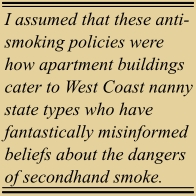 To put all this into perspective, of the more than 70 items on the checklist, only 7 are necessary prerequisites. In the indoor environmental quality category, increased ventilation, low-emitting materials use, thermal comfort, and outdoor air delivery monitoring are all optional. In other categories things like materials reuse, building with certified wood, managing refrigerants, using renewable energy, reducing water use, and minimizing the heat island effect are optional. For a project that’s primarily concerned with environmental protection, prioritizing outdoor smoking bans over these other concerns is strange indeed.
To put all this into perspective, of the more than 70 items on the checklist, only 7 are necessary prerequisites. In the indoor environmental quality category, increased ventilation, low-emitting materials use, thermal comfort, and outdoor air delivery monitoring are all optional. In other categories things like materials reuse, building with certified wood, managing refrigerants, using renewable energy, reducing water use, and minimizing the heat island effect are optional. For a project that’s primarily concerned with environmental protection, prioritizing outdoor smoking bans over these other concerns is strange indeed.
As I said before, I don’t object to leasing companies forbidding smoking if that’s what their customers want them to do. I do object, though, to the USGBC forcing bans onto anyone who wants to advertise their green building practices. Most people don’t know the details of what goes into the LEED checklist; they just want to know that a building is energy efficient, clean, and doesn’t waste resources. Banning smoking outdoors has nothing to do with that and muddles legitimate environmental concerns with restrictions on people’s personal behavior. Worse, it casts doubt on the merit of the USGBC’s other standards. If the organization has so little respect for scientific validity when it comes to smoking, it makes one wonder about the entire checklist. Is it guided by respectable science or by political correctness? Not being an expert in design, I have no way of knowing.
–This originally appeared at JacobGrier.com on Oct. 14.
photo credit: Flickr

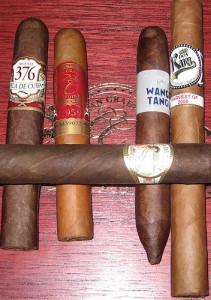 Now you might be asking what qualifies a cigar producer to be “boutique.†According to a 1999 feature article in
Now you might be asking what qualifies a cigar producer to be “boutique.†According to a 1999 feature article in 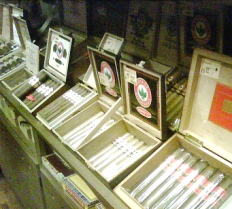
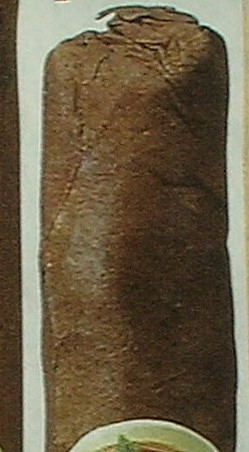 Here’s one that’s been bugging me for years: Who smokes all those cigars you’ve never heard of or seen that they sell in the catalogs? I mean, honestly, have you ever spotted anyone smoking one of them? Imagine someone sitting at home thinking to himself, “Gee, I’m glad this company offers overnight shipping for only $25 more because I just can’t wait to start smoking that bundle of Mexican factory seconds.â€
Here’s one that’s been bugging me for years: Who smokes all those cigars you’ve never heard of or seen that they sell in the catalogs? I mean, honestly, have you ever spotted anyone smoking one of them? Imagine someone sitting at home thinking to himself, “Gee, I’m glad this company offers overnight shipping for only $25 more because I just can’t wait to start smoking that bundle of Mexican factory seconds.â€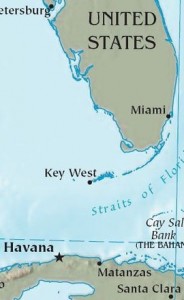 The amount of “black market†cigars in this country has to be astronomical given the U.S. government’s
The amount of “black market†cigars in this country has to be astronomical given the U.S. government’s  This particular backyard was, as I’ve said, pretty big by LA standards. Unfortunately, the view was “fenced in†on the west side by a neighbor’s addition to her home—an ugly, three-story guest house with a window overlooking my friend’s entire yard. Nevermind the fact that building a three-story structure is illegal in this part of the city; what was particularly onerous about this building was its violation of my friend’s privacy. In shape, form, rule-flouting design, and hostile spirit, this building pretty much embodied the neighbor herself. She, a 70-something widow, was notoriously paranoid, litigious (again, ironic, given that her guest house was in clear violation of building codes), angry, and conniving. She was always around, never left her house, and never ran out of excuses to harass or even sue her various neighbors.
This particular backyard was, as I’ve said, pretty big by LA standards. Unfortunately, the view was “fenced in†on the west side by a neighbor’s addition to her home—an ugly, three-story guest house with a window overlooking my friend’s entire yard. Nevermind the fact that building a three-story structure is illegal in this part of the city; what was particularly onerous about this building was its violation of my friend’s privacy. In shape, form, rule-flouting design, and hostile spirit, this building pretty much embodied the neighbor herself. She, a 70-something widow, was notoriously paranoid, litigious (again, ironic, given that her guest house was in clear violation of building codes), angry, and conniving. She was always around, never left her house, and never ran out of excuses to harass or even sue her various neighbors.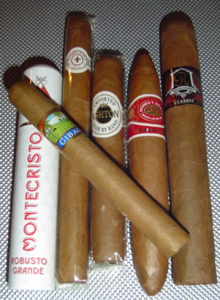 It’s true that many of the finest cigars available happen to be full-bodied cigars. It’s also true, however, that many are medium- or even mild-bodied sticks. Davidoff, for instance, has long been one of the finest cigar brands available, and the company specializes in milder stogies. You’d be hard-pressed to argue that a milder Davidoff is inferior to a fuller cigar of lesser craftsmanship and flavor.
It’s true that many of the finest cigars available happen to be full-bodied cigars. It’s also true, however, that many are medium- or even mild-bodied sticks. Davidoff, for instance, has long been one of the finest cigar brands available, and the company specializes in milder stogies. You’d be hard-pressed to argue that a milder Davidoff is inferior to a fuller cigar of lesser craftsmanship and flavor. Patrick Ashby
Co-Founder & Editor in Chief
Patrick Ashby
Co-Founder & Editor in Chief Patrick Semmens
Co-Founder & Publisher
Patrick Semmens
Co-Founder & Publisher George Edmonson
Tampa Bureau Chief
George Edmonson
Tampa Bureau Chief